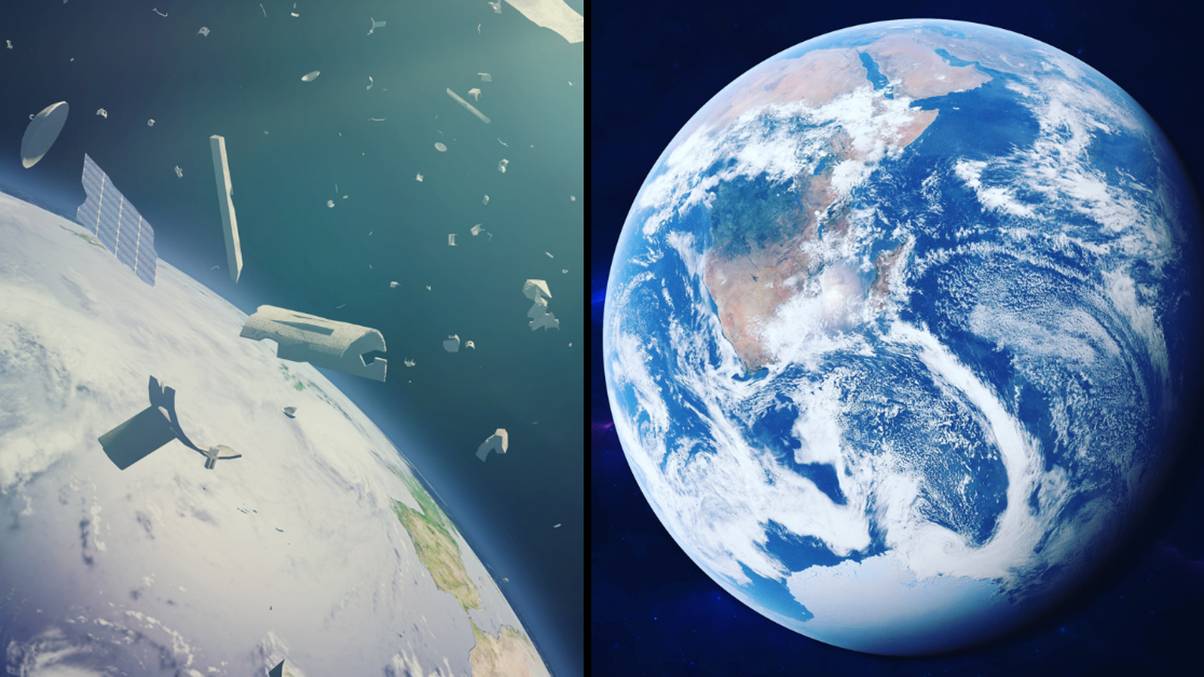“Catastrophe in Orbit: Are We Witnessing the Start of a Chain Reaction in Space Debris?”
In a dizzying twist of fate, a satellite that once dutifully circled our planet is now a veritable spacecraft confetti explosion, leaving roughly 500 floating pieces of debris in its wake! Can you believe it? It’s like Mother Nature’s version of a piñata gone rogue, and oh boy, does it highlight a serious concern we can’t overlook: the infamous Kessler syndrome. Once just a theoretical headache, this scenario, coined by NASA scientists, is inching ever closer to reality. The wreckage originates from the now-deceased Intelsat 33e satellite, a workhorse in mobile communications across Europe, Africa, and Asia, made by Boeing Space Systems. This incident is not just a cosmic clumsy moment; it raises vital questions about the future of our space endeavors. Are we opening a Pandora’s box of orbital chaos? What happens when the junk collides? For anyone who relies on satellites for Wi-Fi, GPS, and perhaps even their next streaming binge on a Friday night, the stakes have never been higher. Curious about what’s brewing in the celestial junkyard? LEARN MORE.
Space experts are on the case after a satellite orbiting Earth has reportedlye smashed into around 500 pieces of debris, all of which are now orbiting the planet in their own right.
It’s an incident that serves to show that the cataclysmic Kessler syndrome might be something closer to being a reality than we might want.
Tracked this week, the space debris comes from the now-defunct Intelsat 33e satellite, made by Boeing Space Systems and used by Intelsat for mobile phone coverage in Europe, Africa, and Asia.

The dangers of the Kessler syndrome mean our satellites could be taken out by space junk (Getty Stock Images)
With a lifespan of roughly 15 years when it was first launched in 2016, its time servicing humanity came to an abrupt end on 19 October when US Space Command reported that Intelsat 33e had broken up into roughly 20 pieces.
Now, through American space-tracking company ExoAnalytic Solutions, it has been confirmed the satellite has smashed up into around 500 pieces of what is now space junk.
ExoAnalytic chief technology officer, Bill Therien, told SpaceNews: “The size of the debris we are tracking ranges from small fragments roughly the size of a softball to larger pieces up to the size of a car door.
“The majority of the tracked objects are on the smaller end of that spectrum, which contributes to the difficulty of consistently observing all the debris pieces.”
The exact amount of debris could even be higher, with ExoAnalytic not tracking every piece every night due to sheer difficulty to do so.
And while the answer is not known as to what happens next, there is a natural fear that the debris from the satellite could encounter the orbit of other objects in space, such as key satellites.

A terrifying outcome for humanity (Getty Stock Images)
Enter the world of the Kessler syndrome, where things get really ominous and rather apocalyptic.
Thought up by NASA scientists Donald Kessler and Burton Cour-Palais back in the 1970s, the Kessler syndrome predicts that if humanity keeps up with how much it is sending in to space, we’re going to get in to trouble as it gets more and more crowded around Earth, with the chances of a collision massively increased.
Just like in the 2008 film Gravity, it is a situation that could see a horror show domino effect where objects collide, gather speed, and keep on colliding. If you’ve not seen what we’re on about, here’s a clip:
John L Crassidis, a professor of innovation and space debris expert at the University at Buffalo, New York, said: “The Kessler syndrome is going to come true. If the probability of a collision is so great that we can’t put a satellite in space, then we’re in trouble.”
With more than 10,000 satellites currently circling the Earth, there is also more than 100 trillion pieces of old satellite going around the planet at the same time. Kessler demonstrated that once the amount of debris in a particular orbit reaches something called ‘critical mass’, collisions begin even if no more objects are launched into the orbit.
In 2021, Rolf Densing, director of operations at the European Space Agency, said: “We are living in a time the mega constellations are being built up, and the population of objects in orbit around us is growing by the thousands per year. So by now, we have about 1,000 starlink satellites in orbit.
“By the end of the decade, we will be talking about tens of thousands of satellites that are in the orbit around us.”

If the Kessler syndrome comes true, humanity could be in for a troubling time (Getty Stock Images)
And if satellites collide, go offline, and we can’t replace them due to the overcrowded space around the planet, we’re doomed.
Internet and Wi-Fi will fail, phones will go down, and GPS and television could be over.
At the same time, planes might not be able to be flown and industries could grind to a halt due to how much we rely on satellites for, such as weather patterns.
Humanity’s best hope to stop the Kessler syndrome from coming true is repurposing what is out there floating around the planet.
In their 2023 paper entitled ‘Kessler’s syndrome: a challenge to humanity’, Amrith Mariappan and Crassidis, say: “By repurposing decommissioned satellites and debris into useful materials to support other space missions, this recycling strategy presents a win-win scenario, promoting environmental sustainability and resource efficiency in space exploration.”













